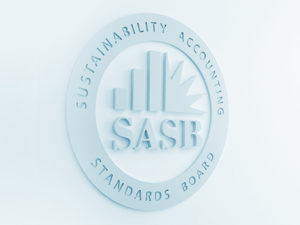
Alessia Falsarone Managing Director, PineBridge Investments
The following guest blog was written by Alessia Falsarone, Managing Director of PineBridge Investments.
With hundreds of climate-related policies globally and central banks on the verge of developing financial stress testing aligned with climate-related scenarios, investors are increasingly asked to refocus on their own assessment of climate risks and opportunities at the individual portfolio level.
Is the investment industry on the right path? Incorporating non-financial disclosures in portfolio evaluation means reskilling as much as upgrading long-standing economic and financial models. Not as a question of whether climate risk or ESG evaluation fall under the realm of fiduciary duty as much as to integrate the evolution of climate change patterns to manage portfolio risk.
For public market investors, corporate disclosures carry a handful of tangible benefits:
- align emerging risks with similar level of scrutiny and rigor of existing public company financial metrics
- enable investment valuation based on company-sourced information as opposed to forecasts and estimates by third-party providers
- serve as a public commitment by company management with respect to transparency over material business risks
- reinforce a peer-pressure effect on closing informational gaps and establishing baseline best practices
For fixed income markets specifically, the evaluation of governance practices is key in addressing the financial materiality of environmental risks and whether they are properly reflected in assessing the creditworthiness of an issuer.
Are we getting compensated for the risk we are taking?
Over the past few years, the ESG in Credit Risk and Ratings Initiative by the UN Principles for Responsible Investment has worked on extending the investor-rating agency conversation surrounding ESG integration in credit risk assessment to other stakeholders, particularly issuers, with the scope of also identifying credit-relevant metrics on which ESG factors may have an impact. Access to an issuer’s very-own disclosures and discussion of its unique position with respect to the financial risks associated with climate change are instrumental to form an investment thesis given the time horizon under consideration, where the average maturity of newly issued developed market credit instruments is in excess of 10 years.
Where lack of comparable year-over-year disclosures limits an investor’s ability to define if the issuer is on an improving journey towards climate readiness, direct engagement with both companies and data providers is becoming as valuable to bondholders as it has been for shareholders in bridging the informational gap. It is also an opportunity for fixed income investors to establish a dialogue with company representatives beyond the investor relations or treasury departments. In my experience, over the past three years, issuers that access the higher-quality credit spectrum (traditional investment grade-rated companies) have exhibited an increasing appetite to discuss their corporate journey with “those who ask” and incorporate investors’ feedback in their corporate disclosure planning.
How much disclosure is truly needed? In the case of developed credit markets, Deloitte reports that in 2018 nearly 86% of S&P 500 companies have produced some type of sustainability information. Yet, our in-house research highlights how only certain sustainability performance indicators are likely to contribute to risk-adjusted issuer-level returns in developed credit markets. Employing a myriad of data fields and associated red flags does not necessarily yield better investment outcomes. It is, in fact, quite difficult to explain from the lens of traditional bond portfolio management.
Since their launch in 2017, the TCFD recommendations have provided much-needed reference guidance to promote the integration of climate-related information in investors’ due diligence. Adding to the utility of this guidance is the high level of alignment between Corporate Reporting Dialogue participants’ practical frameworks and the TCFD recommendations. For example, although the SASB standards are in their early stages of implementation, they have already equipped corporate reporters and investors with foundational metrics that facilitate the flow of TCFD-aligned financial disclosures related to risk management. We find that by overlaying the SASB materiality framework in the analysis of climate risks, as credit investors we are able to:
- define top-down, sector-specific climate-related scenario parameters that prioritise the financially material outcomes of climate risk in terms of both direct and indirect impacts, and
- provide an actionable roadmap for our portfolio de-carbonization efforts at the individual holding level as a function of time vs. cost associated in the context of best available technologies.
Specifically, through the lens of our proprietary Key Risk Indicators (KRIs) for developed credit market issuers, we have been able to assess how longer-term ESG trends in alignment with SASB’s financial materiality sector guidance affect portfolio exposures to varying degrees of climate stress.
While the risk profile of everyday portfolios has become inherently more global, harmonization efforts such as the Better Alignment Project magnify the value of investor engagement. Moving forward, shifting from the assessment of corporate disclosures to sustainability performance will be key for fixed income investors to embed cost of capital considerations in pricing climate change externalities as part of the credit risk profile of sustainability underperformers and reward sector-level transition milestones with increased asset flows.

